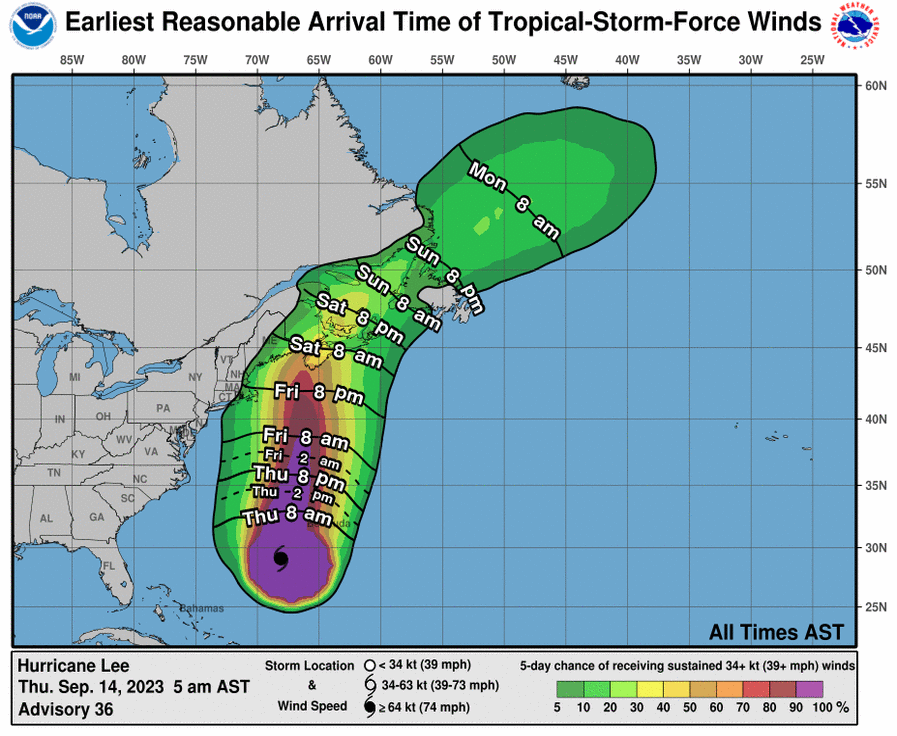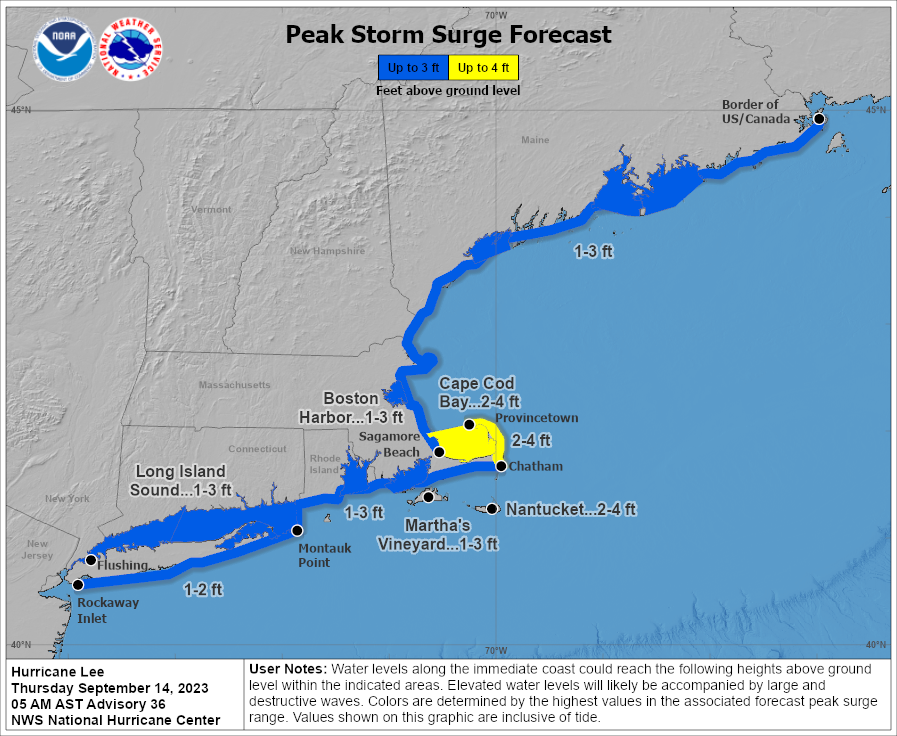Living on the Gulf coast, a tropical storm is nearly an everyday event. However, as recently witnessed in Southern California, if your coastal geology is not used to the onslaught of numerous storms, considerable damage and loss of life is entirely in the realm of possibility. I pray with the pseudo-recent Sandy, the North-Eastern coast of the US and Eastern Canadian coast heed the lessons learned from Sandy and move into a defensive posture.
Wind and rain will be the greatest threats to the area as can be seen below. Earliest threat to land should begin late in the day Friday, 15 Sep 2023. The strongest winds should stay off-shore. The coast of Eastern Maine and the Canadian coast will get the brunt of the winds. New Brunswick may experience winds exceeding 50 mph. But wait, there’s more. Continue scrolling on for storm-surge …

Storm surge is expected to be as high as 3 ft along the coast. Cape Cod Bay and surrounding area is expected to get water a high as an additional 4 ft. Recall storm surge is the height of the water added to the normal tide. If the storm lands at high tide, then 4 ft. of surge can be significant. Those in the areas delineated by NOAA should make adequate defenses of their people and property.

Hurricane Lee should provide some singularity input for CWAADS’s data collection and analysis efforts as its projected path will take it close to or over a number of weather data feeds. (note to self, I need to activate land-based feeds.) The course of Lee will provide a significant opportunity for post-event data analysis. Getting the system to work mathematically would be a boost for the project. The purpose of the analysis would be to test if the system could accurately detect a coastal weather anomaly adding a tool for coastal workers for hazardous weather detection.

Please be safe. Find a local television station and follow the weather team prior to the storm’s landfall.
Stay wise. Stay safe. Stay informed.
Jay C. “Jazzy J” Theriot
Additional information can be had at hurricanes.gov.

Leave a Reply